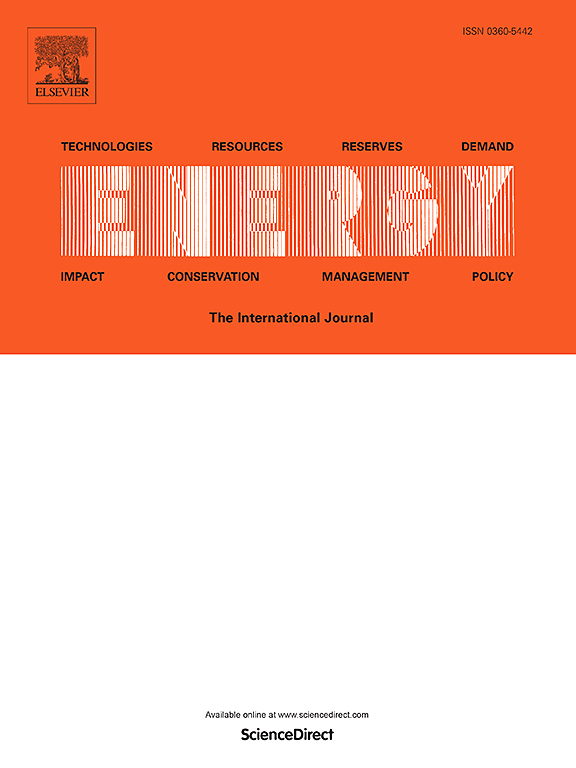Multi-objective optimization and off-design performance analysis on the ammonia-water cooling-power/heating-power integrated system
IF 9
1区 工程技术
Q1 ENERGY & FUELS
引用次数: 0
Abstract
The utilization of ammonia-water as a working fluid in energy conversion systems presents a promising approach for efficient geothermal energy development. In this paper, a novel ammonia-water cooling-power/heating-power integrated system is presented, a structure design method suitable for the integrated thermal system is developed, and a comprehensive analysis of system performance using thermodynamic, economic, and off-design analytical methods is conducted. This study explores the impact of various variables on system design and off-design performance. The results demonstrate that optimal design performance is achieved at evaporation temperatures of 3.5 °C (cooling-power) and 20 °C (heating-power), and the hot-part temperature difference is 21 °C. Lower mass flow rate and ambient temperature lead to improved off-design performance. Due to the influence of pressure on the phase transition temperature of geothermal water, the position of the phase transition zone has shifted, resulting in a change in the mass flow rate of ammonia-water. When the pressure ratio drops below 0.9, the heat release during the phase transition of geothermal water is incomplete, leading to a significant decrease in pump speeds by 44.76 % and 41.14 % in the two modes respectively. This work provides valuable insights and references for the design and optimization of integrated thermal systems.
氨水冷却-发电-供热一体化系统的多目标优化和非设计性能分析
在能量转换系统中利用氨水作为工作流体,是高效开发地热能的一种可行方法。本文介绍了一种新型氨水冷却-发电-供热-发电集成系统,开发了一种适合集成热系统的结构设计方法,并使用热力学、经济学和非设计分析方法对系统性能进行了全面分析。本研究探讨了各种变量对系统设计和非设计性能的影响。结果表明,在蒸发温度为 3.5 °C(制冷功率)和 20 °C(制热功率),热部件温差为 21 °C时,可达到最佳设计性能。降低质量流量和环境温度可改善非设计性能。由于压力对地热水相变温度的影响,相变区的位置发生了移动,导致氨水的质量流量发生变化。当压力比降至 0.9 以下时,地热水相变过程中的热量释放不完全,导致两种模式下的泵速分别大幅下降 44.76 % 和 41.14 %。这项研究为集成热系统的设计和优化提供了有价值的见解和参考。
本文章由计算机程序翻译,如有差异,请以英文原文为准。
求助全文
约1分钟内获得全文
求助全文
来源期刊

Energy
工程技术-能源与燃料
CiteScore
15.30
自引率
14.40%
发文量
0
审稿时长
14.2 weeks
期刊介绍:
Energy is a multidisciplinary, international journal that publishes research and analysis in the field of energy engineering. Our aim is to become a leading peer-reviewed platform and a trusted source of information for energy-related topics.
The journal covers a range of areas including mechanical engineering, thermal sciences, and energy analysis. We are particularly interested in research on energy modelling, prediction, integrated energy systems, planning, and management.
Additionally, we welcome papers on energy conservation, efficiency, biomass and bioenergy, renewable energy, electricity supply and demand, energy storage, buildings, and economic and policy issues. These topics should align with our broader multidisciplinary focus.
 求助内容:
求助内容: 应助结果提醒方式:
应助结果提醒方式:


